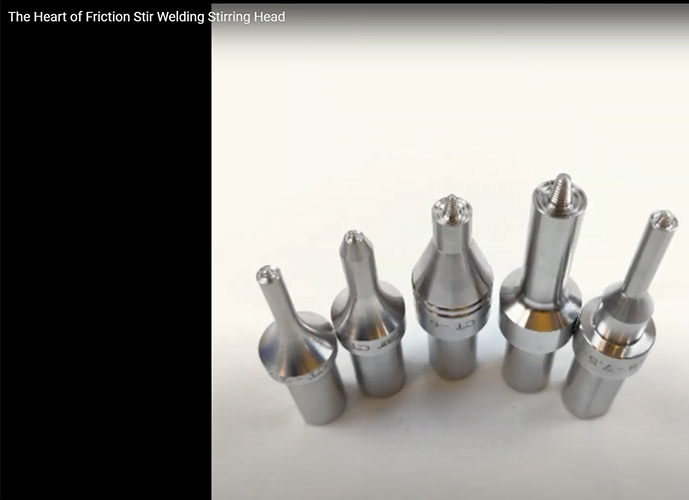The friction stir welding method is the same as conventional welding friction. Friction stir welding also uses friction heat and plastic deformation heat as welding heat sources. The difference is that the welding process of friction stir welding is that a stirring needle of a cylinder or other shape (such as a threaded cylinder) is inserted into the joint of the workpiece, and the high-speed rotation of the welding head makes it rub against the welding workpiece material, thereby, the temperature of the material at the connection part increases and softens. At the same time, the material is subjected to friction stir to complete the welding. During the welding process, the workpiece should be rigidly fixed on the back pad, the welding head rotates at a high speed, and the edge moves relative to the workpiece along the seam of the workpiece. The protruding section of the welding head protrudes into the material for friction and stirring, and the shoulder of the welding head rubs against the surface of the workpiece to generate heat and is used to prevent the overflow of the plastic material, and at the same time, it can remove the oxide film on the surface.
During the stir welding process, the stirring needle extends into the seam of the workpiece while rotating, and the frictional heat between the rotating stirring head (mainly the shaft shoulder) and the workpiece causes strong plastic deformation of the material in front of the welding head, and then with the movement of the welding head, the highly plastically deformed material is gradually deposited behind the mixing head to form a friction stir welding seam. The requirements of friction stir welding on equipment are not high. The most basic requirements are the rotational movement of the welding head and the relative movement of the workpiece. Even a milling machine can easily meet the requirements of small flat plate butt welding. But the rigidity of welding equipment and fixtures is extremely important.

The stirring head is generally made of tool steel, and the length of the welding head is generally slightly shorter than the required welding depth. It should be noted that the end of the friction stir welder leaves a keyhole in the terminal. Usually, this keyhole can be cut off, or it can be sealed by other welding methods. In response to the keyhole problem, a telescopic stirring head has been successfully developed, and the welding keyhole will not be left after welding.